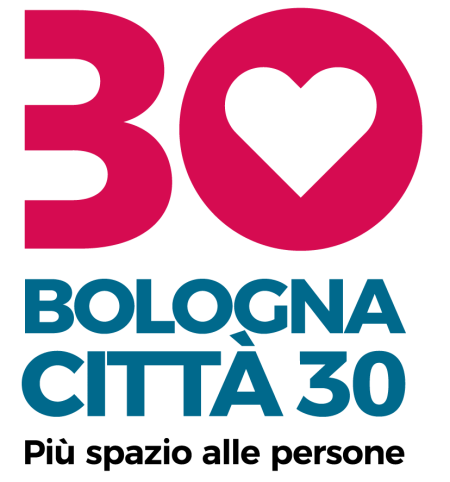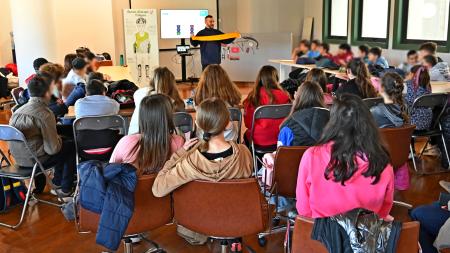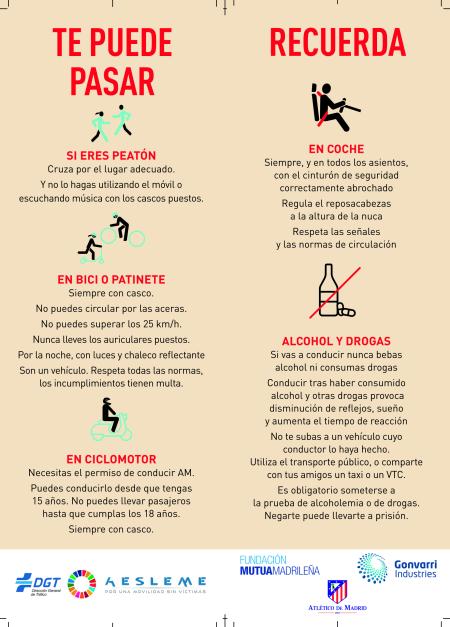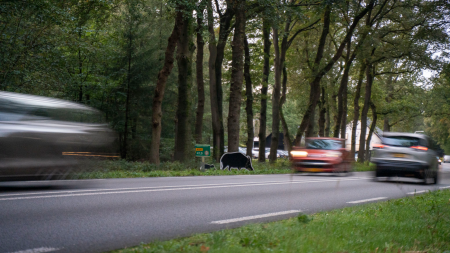Our members are dedicated to improving road safety and sharing their knowledge with the wider community. Here, you can explore our members' good practices – initiatives that have been assessed for their effectiveness in addressing a road safety problem and have proven results.
Get inspired – and sign up to share your good practices too!

Monday, June 17, 2024
In Italia il 73% degli incidenti avviene sulle strade urbane, la velocità eccessiva è la prima causa dei più gravi e le vittime sono soprattutto utenti vulnerabili: persone a piedi, in bici o in moto. In questo contesto nazionale, nel 2022 Bologna ha registrato il 3° tasso di mortalità stradale più alto tra le quattordici grandi città italiane.
Con Bologna Città 30 - partendo dai dati dell’incidentalità locale, dai piani internazionali, europei e statali, dalle evidenze scientifiche sulla velocità sicura dei 30 km/h in ambito urbano e dal successo di numerose città in Europa - ci siamo dati come obiettivo prioritario diminuire incidenti, morti e feriti sulle strade cittadine, riducendo il limite massimo di velocità e creando uno spazio stradale più favorevole e sicuro per la mobilità attiva, senza variazioni significative dei tempi di viaggio anche grazie a un traffico più fluido, con benefici ambientali e di salute.
La Città 30 interpreta la sfida di unire in un progetto complessivo e dare attuazione concreta agli obiettivi generali del PUMS di Bologna del 2019:
- dimezzare l’incidentalità, incamminandosi verso la Vision Zero
- ridurre inquinamento atmosferico e acustico, nonché emissioni climalteranti da traffico, diminuendo la quantità di auto ed elettrificando i trasporti
- trasferire 255.000 spostamenti quotidiani che avvengono in automobile su modalità di trasporto sostenibili (mezzi pubblici, bici, piedi)
- trasformare lo spazio stradale da “conteso” a “condiviso”, migliorando accessibilità, qualità e sicurezza delle strade e piazze soprattutto nei quartieri dove le persone abitano, vanno a lavoro/scuola e passano il tempo libero.
Con Bologna Città 30 - partendo dai dati dell’incidentalità locale, dai piani internazionali, europei e statali, dalle evidenze scientifiche sulla velocità sicura dei 30 km/h in ambito urbano e dal successo di numerose città in Europa - ci siamo dati come obiettivo prioritario diminuire incidenti, morti e feriti sulle strade cittadine, riducendo il limite massimo di velocità e creando uno spazio stradale più favorevole e sicuro per la mobilità attiva, senza variazioni significative dei tempi di viaggio anche grazie a un traffico più fluido, con benefici ambientali e di salute.
La Città 30 interpreta la sfida di unire in un progetto complessivo e dare attuazione concreta agli obiettivi generali del PUMS di Bologna del 2019:
- dimezzare l’incidentalità, incamminandosi verso la Vision Zero
- ridurre inquinamento atmosferico e acustico, nonché emissioni climalteranti da traffico, diminuendo la quantità di auto ed elettrificando i trasporti
- trasferire 255.000 spostamenti quotidiani che avvengono in automobile su modalità di trasporto sostenibili (mezzi pubblici, bici, piedi)
- trasformare lo spazio stradale da “conteso” a “condiviso”, migliorando accessibilità, qualità e sicurezza delle strade e piazze soprattutto nei quartieri dove le persone abitano, vanno a lavoro/scuola e passano il tempo libero.

Monday, June 17, 2024
The main challenge is the reduction of road accidents as a function of driving behavior. In recent years, significant progress has been made and the rate of accidents has decreased, but further improvement is needed in drivers behavior and at the same time in the infrastructure which is already extremely improved. For this reason, we created the safe cycling training program to train future drivers: the children, in order to become responsible drivers in the future

Monday, June 17, 2024
Our experience shows that most road accidents are caused by human error. Various analyses carried out by ALSA show that most road accidents are caused by inappropriate driver behaviour.
In order to manage road safety proactively, it is necessary to have a detailed and rigorous knowledge of the performance and behaviour of each driver in order to know their skills and behaviours, as well as to track their evolution over time.
To this end, ALSA has invested in technology in more than 3,700 vehicles in Spain that allows us to measure speeding, monitor various parameters that reflect driving style and detect various driver behaviours using innovative smart camera technology.
These smart cameras are based on "machine vision” and "artificial intelligence" (MV+IA) systems, which allow us to detect 40 types of driver behaviour and are particularly noteworthy for their innovation.
The data provided by the aforementioned technologies is used to calculate the risk profile of each driver. ALSA defines personalised actions for each driver: training, assignment to certain vehicles and routes, greater follow-up and monitoring, etc.
In addition, each driver has access to the data available on their own performance through an internal app (called "MiAlsa"). In this way, drivers can consult information on their own performance (consumption, driving styles, speeding, incidents, etc.).
In order to manage road safety proactively, it is necessary to have a detailed and rigorous knowledge of the performance and behaviour of each driver in order to know their skills and behaviours, as well as to track their evolution over time.
To this end, ALSA has invested in technology in more than 3,700 vehicles in Spain that allows us to measure speeding, monitor various parameters that reflect driving style and detect various driver behaviours using innovative smart camera technology.
These smart cameras are based on "machine vision” and "artificial intelligence" (MV+IA) systems, which allow us to detect 40 types of driver behaviour and are particularly noteworthy for their innovation.
The data provided by the aforementioned technologies is used to calculate the risk profile of each driver. ALSA defines personalised actions for each driver: training, assignment to certain vehicles and routes, greater follow-up and monitoring, etc.
In addition, each driver has access to the data available on their own performance through an internal app (called "MiAlsa"). In this way, drivers can consult information on their own performance (consumption, driving styles, speeding, incidents, etc.).

Monday, June 17, 2024
The “It Can Happen to You” program addresses the high incidence of traffic accidents resulting in deaths and injuries in Spain. It emphasizes the importance of continuous road safety education to reduce these incidents. Targeting children, the program aims to instill lifelong safe behaviors as pedestrians, cyclists, motorcyclists, passengers, and drivers. It focuses on key issues such as risk perception, distractions, speed, the effects of alcohol and drugs, and proper use of safety equipment. By illustrating the consequences of unsafe behaviors, the program fosters responsible and respectful attitudes towards road safety.

Monday, June 17, 2024
Nature in Gelderland is thriving, with a growing number of wild animals. This is a beautiful phenomenon, but unfortunately, it also brings an increased risk of accidents involving wild animals. The chances of a poor outcome for the animal are high, but there is also a significant risk of material damage and severe consequences for the driver. The risk of collisions with wildlife is especially higher during certain periods, specific times, and at certain locations. Think of dawn and dusk, and the transition to winter or summer time.
In the past, the Province of Gelderland has taken various measures by adjusting the infrastructure and influencing the behavior of wild animals. Examples of these measures include the installation of warning signs, wildlife grids, and boar disappearance blocks. However, it turns out that more is needed to tackle the problem.
Drivers often underestimate the risk of animals being along the roads in the forests. Despite the recommended speed limits, they often drive too fast and are not always aware of the risk of animals along the roads. Therefore, the province of Gelderland wants to place more emphasis on the behavior of road users. In response to this need, creative behavioral agency andc and behavioral agency Dijksterhuis and Van Baaren have developed a behavior-oriented approach, including interventions, to encourage road users to adhere to the recommended speed limits.
In the past, the Province of Gelderland has taken various measures by adjusting the infrastructure and influencing the behavior of wild animals. Examples of these measures include the installation of warning signs, wildlife grids, and boar disappearance blocks. However, it turns out that more is needed to tackle the problem.
Drivers often underestimate the risk of animals being along the roads in the forests. Despite the recommended speed limits, they often drive too fast and are not always aware of the risk of animals along the roads. Therefore, the province of Gelderland wants to place more emphasis on the behavior of road users. In response to this need, creative behavioral agency andc and behavioral agency Dijksterhuis and Van Baaren have developed a behavior-oriented approach, including interventions, to encourage road users to adhere to the recommended speed limits.